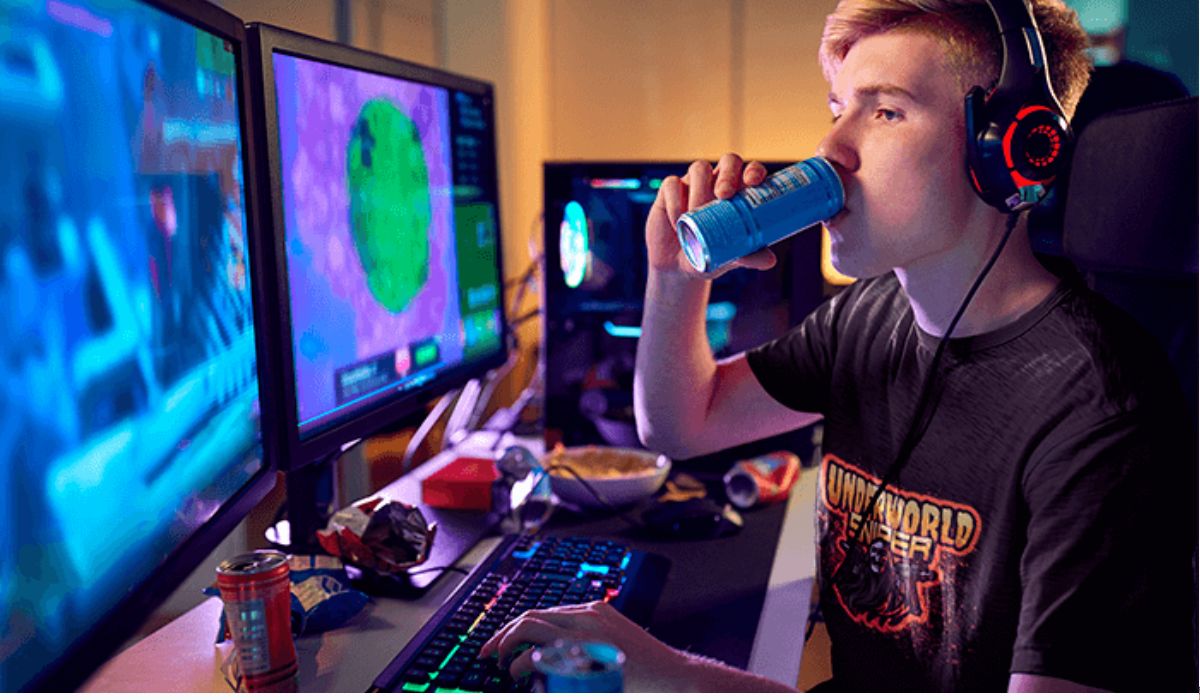The realm of e-sports has burgeoned into a multi-billion dollar industry, captivating audiences globally with its competitive gaming, skilled players, and dynamic tournaments. Central to this thriving ecosystem is the use of codes—software codes, conduct codes, and even promotional codes. This article delves into the various types of codes in e-sports, their significance, and how they shape the industry.
Software Codes: The Backbone of E-Sports
Game Development and Integrity
Software codes are the foundation upon which all e-sports games are built. These codes dictate the game’s mechanics, physics, graphics, and overall functionality. The complexity and robustness of these codes determine the quality and reliability of the game.
- Game Engines: Popular e-sports titles like “League of Legends,” “Dota 2,” and “Counter-Strike: Global Offensive” are built on sophisticated game engines. These engines use vast amounts of code to create immersive, responsive, and fair gaming experiences. Game developers constantly update and optimize these codes to enhance gameplay, fix bugs, and maintain competitive balance.
- Anti-Cheat Systems: Ensuring fair play is paramount in e-sports. Anti-cheat systems, embedded within the game’s code, are designed to detect and prevent cheating. These systems use algorithms to identify irregularities in player behavior and gameplay, such as aim bots or wall hacks. Maintaining the integrity of the game through robust anti-cheat mechanisms is crucial for sustaining the trust of players and audiences alike.
Modding and Customization
Modding refers to the modification of game software by players or third parties to alter gameplay or add new features. While modding is popular in casual gaming, its place in e-sports is more nuanced.
- Custom Maps and Modes: Some e-sports games allow for custom maps and game modes created by the community. For example, “Counter-Strike” has a vibrant modding community that creates new maps, which can occasionally be featured in competitive play. These modifications can breathe new life into games and keep the competitive scene fresh.
- Regulation of Mods: To maintain fairness, official e-sports tournaments often regulate or outright ban the use of mods. Ensuring that all competitors are playing on an even field is essential for the legitimacy of the competition.
Conduct Codes: Upholding Integrity and Sportsmanship

Professional Conduct
E-sports has grown into a professional industry with substantial financial stakes, making professional conduct critical.
- Player Conduct Codes: Professional e-sports organizations and tournament organizers enforce strict codes of conduct for players. These codes cover behavior during competitions, interactions with other players, and conduct on social media. Violations can result in fines, suspensions, or bans, emphasizing the importance of sportsmanship and professionalism.
- Team Conduct Codes: Teams also have internal codes that govern the behavior of their players and staff. These codes ensure that team members represent the organization positively and adhere to both team and league standards.
Ethical Standards
Ethics in e-sports extend beyond player behavior to encompass broader issues such as match-fixing, doping, and gambling.
- Anti-Doping Regulations: Just like in traditional sports, the use of performance-enhancing drugs (PEDs) is prohibited in e-sports. Organizations like the Electronic Sports League (ESL) have implemented anti-doping policies, including random drug testing, to ensure fair competition.
- Match-Fixing and Gambling: Match-fixing—where players deliberately lose or manipulate the outcome of a game—undermines the integrity of e-sports. Governing bodies enforce strict penalties for those involved in match-fixing to maintain the credibility of the sport.
Promotional Codes: Driving Engagement and Revenue
Marketing and Audience Engagement
Promotional codes are a vital tool for marketing and increasing engagement within the e-sports community.
- In-Game Items and Skins: Many e-sports titles offer promotional codes that players can redeem for in-game items, such as skins, weapons, or character costumes. These items often have cosmetic effects, allowing players to personalize their gaming experience and show support for their favorite teams.
- Event Tickets and Merchandise: Promotional codes can also be used to access discounts on event tickets or team merchandise. This encourages fans to attend live events or purchase team-branded products, fostering a deeper connection between fans and the e-sports ecosystem.
Sponsorships and Partnerships
E-sports teams and events often partner with brands to offer promotional codes, benefiting both parties.
- Brand Sponsorships: Brands can sponsor e-sports events or teams and provide promotional codes for their products or services. This creates a mutually beneficial relationship where brands gain exposure to a dedicated audience, and teams or events receive financial support.
- Cross-Promotions: Cross-promotions between e-sports and other entertainment industries are also common. For example, a popular energy drink brand might partner with an e-sports team to offer exclusive in-game items through promotional codes, driving sales and brand loyalty.
Challenges and Future Trends
Challenges
The use of codes in e-sports, while beneficial, also presents challenges.
- Security and Fairness: Ensuring the security of software codes to prevent cheating and maintaining fairness in competitions is a constant challenge. Developers must stay ahead of cheaters who continually find new ways to exploit game mechanics.
- Ethical Enforcement: Enforcing conduct and ethical standards requires continuous vigilance and resources. Organizations must balance strict enforcement with fair treatment of players and teams.
- Monetization and Accessibility: While promotional codes drive revenue, there is a fine line between monetization and accessibility. Over-reliance on in-game purchases can alienate players who cannot afford them, potentially impacting the game’s community and competitive scene.
Future Trends
The future of codes in e-sports holds exciting possibilities.
- Advanced Anti-Cheat Technologies: As cheating methods evolve, so will anti-cheat technologies. Machine learning and artificial intelligence could play a significant role in detecting and preventing cheating in real-time, ensuring fair play.
- Blockchain and Smart Contracts: Blockchain technology could revolutionize how e-sports handle transactions, including prize distributions and player contracts. Smart contracts can ensure transparent and secure agreements, reducing disputes and enhancing trust.
- Virtual Reality (VR) and Augmented Reality (AR): The integration of VR and AR in e-sports will require new codes and standards. These technologies promise to create immersive and innovative gaming experiences, pushing the boundaries of competitive gaming.
- Enhanced Fan Interaction: As e-sports continues to grow, enhanced fan interaction through personalized promotional codes and interactive experiences will become more prevalent. This could include virtual meet-and-greets, exclusive in-game events, and more.
FAQ: Codes in E-Sports
General Overview
- What are codes in e-sports?
- Codes in e-sports refer to the various types of software, conduct, and promotional codes that play integral roles in game development, maintaining fair play, and marketing.
Software Codes
- What role do software codes play in e-sports?
- Software codes are the foundation of e-sports games, dictating the game’s mechanics, physics, graphics, and overall functionality. They are crucial for creating an immersive and fair gaming experience.
- What are game engines?
- Game engines are frameworks used to build and run e-sports games. Popular e-sports titles like “League of Legends” and “Counter-Strike: Global Offensive” are built on sophisticated game engines.
- What is the importance of anti-cheat systems?
- Anti-cheat systems embedded in game codes detect and prevent cheating by identifying irregularities in gameplay, such as the use of aim bots or wall hacks, thereby ensuring fair competition.
- Can players modify e-sports games?
- While modding is popular in casual gaming, official e-sports tournaments often regulate or ban mods to ensure fair play. However, custom maps and modes created by the community can sometimes be featured in competitive play.
Conduct Codes
- What are player conduct codes?
- Player conduct codes are rules set by professional e-sports organizations and tournament organizers that govern player behavior during competitions, interactions with other players, and conduct on social media.
- Why are team conduct codes important?
- Team conduct codes ensure that team members represent their organization positively and adhere to both team and league standards, promoting professionalism and sportsmanship.
- What ethical standards are enforced in e-sports?
- Ethical standards in e-sports include anti-doping regulations, anti-match-fixing measures, and policies against gambling. These standards are enforced to maintain the credibility and fairness of competitions.
- How is doping addressed in e-sports?
- Organizations like the Electronic Sports League (ESL) implement anti-doping policies, including random drug testing, to ensure that players do not use performance-enhancing drugs.
Promotional Codes
- What are promotional codes in e-sports?
- Promotional codes are used for marketing and increasing engagement within the e-sports community. They can be redeemed for in-game items, discounts on event tickets, and team merchandise.
- How do promotional codes benefit players?
- Players can use promotional codes to access exclusive in-game items such as skins and costumes, allowing them to personalize their gaming experience and show support for their favorite teams.
- How do promotional codes benefit e-sports organizations?
- Promotional codes help e-sports organizations drive revenue, increase fan engagement, and build brand loyalty. They are often used in partnerships with brands to offer exclusive products and discounts.
- What are some examples of cross-promotions in e-sports?
- Cross-promotions can include partnerships between e-sports teams and brands, such as an energy drink company offering exclusive in-game items through promotional codes, benefiting both parties through increased exposure and sales.
Challenges and Future Trends
- What are the main challenges related to codes in e-sports?
- Key challenges include ensuring the security of software codes to prevent cheating, enforcing ethical conduct codes, and balancing monetization with accessibility to avoid alienating players.
- What are some future trends in anti-cheat technologies?
- Future anti-cheat technologies may leverage machine learning and artificial intelligence to detect and prevent cheating in real-time, ensuring fair play.
- How might blockchain impact e-sports?
- Blockchain technology could revolutionize e-sports by providing secure and transparent transactions, including prize distributions and player contracts, enhancing trust and reducing disputes.
- What role could virtual reality (VR) and augmented reality (AR) play in e-sports?
- VR and AR have the potential to create immersive and innovative gaming experiences, pushing the boundaries of competitive gaming and requiring new codes and standards for fair play.
- How will fan interaction evolve in e-sports?
- Enhanced fan interaction through personalized promotional codes, virtual meet-and-greets, and exclusive in-game events will likely become more prevalent, deepening fan engagement and loyalty.
Conclusion
Codes, in their various forms, are integral to the e-sports industry. Software codes drive the development and integrity of games, conduct codes uphold professional and ethical standards, and promotional codes enhance engagement and revenue. As e-sports continues to evolve, so too will the role and complexity of these codes, shaping the future of competitive gaming. The challenges and future trends highlighted in this article underscore the dynamic nature of e-sports and its potential for innovation and growth.









